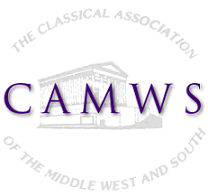Recommendations on Requirements for Seals of Biliteracy for Classical Languages
These recommendations, based upon ACTFL guidelines, were generated by the National Committee for Latin and Greek (NCLG) and have been endorsed by the following organizations:
Illinois Classical Conference (September, 2016)
CAMWS Executive Committee (November, 2016)
North Carolina Classical Association (October, 2017)
Society for Classical Studies (October, 2017)
Eta Sigma Phi National Classics Honorary Society (December, 2017)
CAMWS encourages other state, provincial, regional and national classical organizations to endorse it as well.
History of the Seal
Across the country, states, school districts, and even individual schools have begun to issue Seals of Biliteracy for high school diplomas, to identify graduates “who have studied and attained proficiency in two or more languages by high school graduation.” The first state to issue such seals was California, beginning with its 2012 graduates, after over 100 school districts in that state had already made them available. In a state whose students speak over 60 different languages (plus 13,000 students whose languages fall under “other”) one primary goal of this designation was to honor achievement both in students’ first languages and in English. As the clearinghouse Seal of Biliteracy says: “Our vision is to help students recognize the value of their academic success and see the tangible benefits of being bilingual.” Nearly half of the fifty states have adopted a version of this seal to date.
In 2015 four national organizations (American Council on the Teaching of Foreign Languages--ACTFL; National Association of Bilingual Education--NABE, National Council of State Supervisors for Languages--NCSSFL, and Teachers of English to Speakers of Other Languages--TESOL International Association) published recommendations for national guidelines for such standards; that publication can be downloaded here: https://www.actfl.org/resources/press-releases/seal-biliteracy-updated-implementation-guidelines-focus-equity-and-expansion#:~:text=The%20Seal%20of%20Biliteracy%20is,languages%20by%20high%20school%20graduation.
Importantly for us, these recommendations assume that students of any language should eligible to earn a seal. They also recognize that in language assessment one size does not fit all; specifically, they note that students of Latin and classical Greek may demonstrate proficiency in reading and writing and not necessarily in oral communicative modes.
Recommendations
The current document recommends [eventually we can name the groups who sign on to this]
- that all states accept and implement the national guidelines, specifically that which asks students to demonstrate proficiency by assessments beyond classroom performance, in both English and one or more other languages;
- that each state or district make its own determination of the level of proficiency a student must demonstrate to earn a seal;
- that states use one or more of the following assessments to demonstrate proficiency in Latin and Greek:
- Advanced Placement Latin Exam
- ALIRA (ACTFL Latin Interpretive Reading Exam)
- International Baccalaureate Exams in Latin or Greek
- National Latin Exam
- National Greek Exam
- SAT Subject Test in Latin
- state-specific exams when appropriate;
- that states recognize but do not require students to demonstrate productive use in either oral or written mode in either Latin or Greek;
- that Classicists research the status of Seals of Biliteracy in their own states and advocate for appropriate assessments for students of Latin and Greek.
References
- In general: www.sealofbiliteracy.org
- California students: http://data1.cde.ca.gov/dataquest/SpringData/StudentsByLanguage.aspx?Level=State&TheYear=2013-14&SubGroup=All&ShortYear=1314&GenderGroup=B&CDSCode=00000000000000&RecordType=EL
- National Guidelines: https://www.actfl.org/resources/press-releases/seal-biliteracy-updated-implementation-guidelines-focus-equity-and-expansion#:~:text=The%20Seal%20of%20Biliteracy%20is,languages%20by%20high%20school%20graduation.
